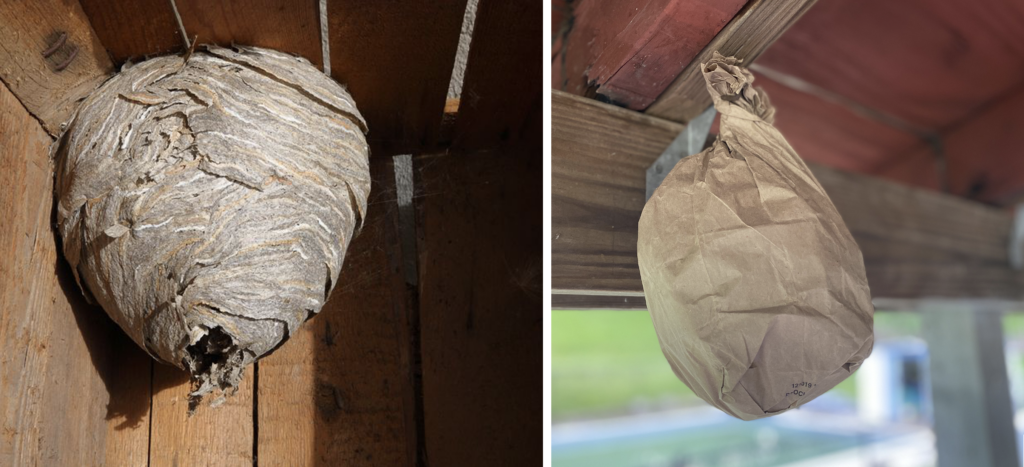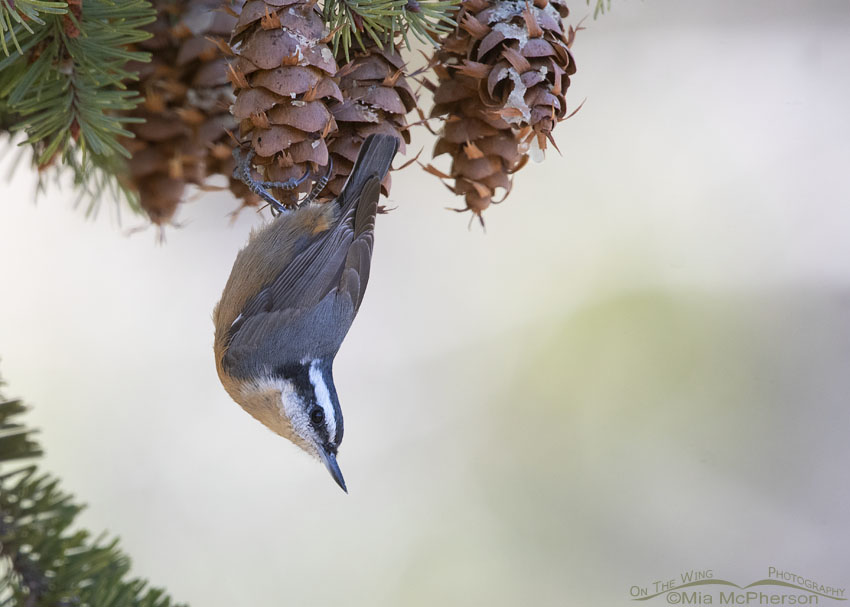Did biomimicry ever catch your attention? Perhaps in futuristic car designs or quirky shapes in buildings. We often associate it with industrial and exterior design, but can nature truly inspire services?
I recently came across a video showcasing a rather ruthless method of removing wasps from rural houses—using gasoline. Now, picture this: They put gasoline in a container. Then, they reach out towards the nest with the gasoline-filled container. All wasps fall into the gasoline and die within seconds. This unconventional approach was presented as a “life hack” to quickly deal with wasps nests.
After the sting of the video, I got sucked into the infinite scroll of social media, on a mission to find a kinder solution. I discovered a video from a caring soul tackling the same wasp problem. Their brilliant solution made my day!
Before I share this solution with you, let’s sum up the problematic scene starring the wasps:
Problem: Wasp nests outside of rural houses frighten households.
- Why do they frighten people? Because wasps are dangerous. Even unintentionally causing harm can be threatening to people. (So reaching out to a nest with a gasoline container doesn’t seem logical while leaning on a ladder, and when it’s level with your face if your hand slips out of fear, it’s too late.)
- Why are they dangerous? Because they are known as aggressive creatures, they can transfer more venom per sting than any other insect that stings.
- Why are they aggressive? Because they are protecting their nests.
- Why are they protecting their nests? Because they are territorial creatures.
- Why are they territorial? Because they are defending their colony when they feel it is being threatened!
Now, brace yourself for the innovative solution… This clever person, who has wasps on their balcony has taped a Starbucks bag to the ceiling. Biomimicry swoops in! See the image below, and compare a wasps nest to a hanging Starbucks bag—both look the similar. The wasps, fooled into thinking there’s an imposter nest will just leave their own nest with no harm caused.

Wasps are territorial, as they think there’s another nest in their territory, they will leave their own nest of their own free will.
Comparing this scenario with the first, more dangerous one, this solution is also budget-friendly, and you can even reuse the paper bag after the wasps are gone. Gasoline? I don’t think so.
Long story short, everyday problems can spark innovative and effective solutions through service design and reframing the problem.

Take a cue from the Nuthatch bird—they are better hunters because they hunt upside down, doing things like no other bird does. Same as changing our perspective while approaching solutions. Nature’s got some pretty cool tricks to teach us!
Let me conclude with five points I prioritise as a service designer when crafting service processes:
- Knowing our resources (mother nature, budget, etc.)
- Understanding the context
- Getting to know our users
- Anticipating possible side effects
- Embracing creativity ✨ ✨ ✨
Thanks for reading. May your day be filled with pleasing services!
Beyza Nur Karaca
